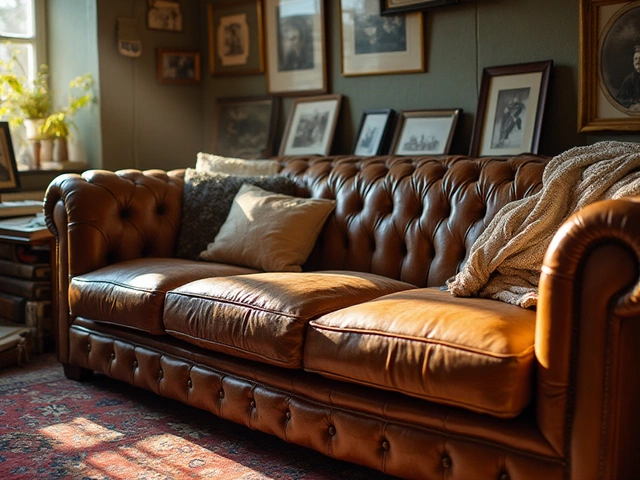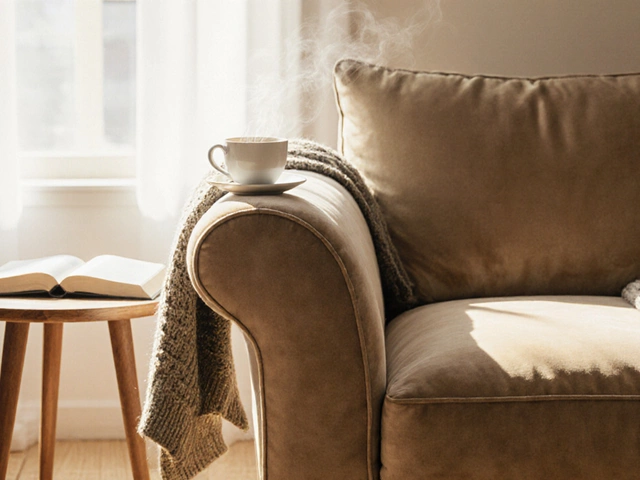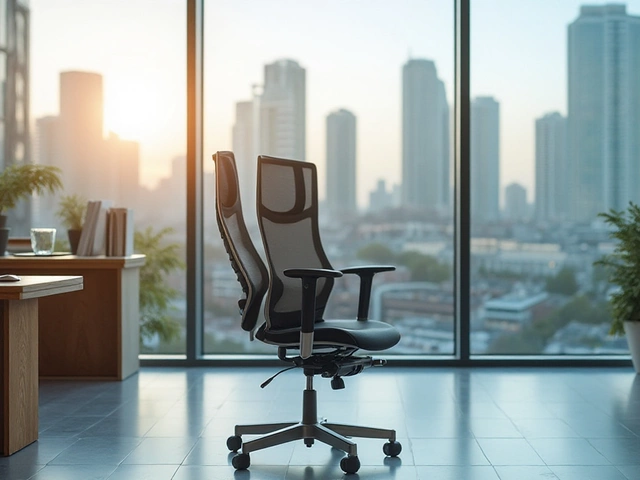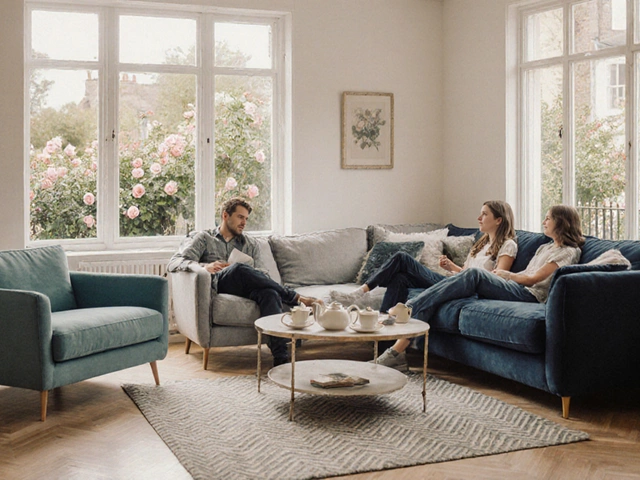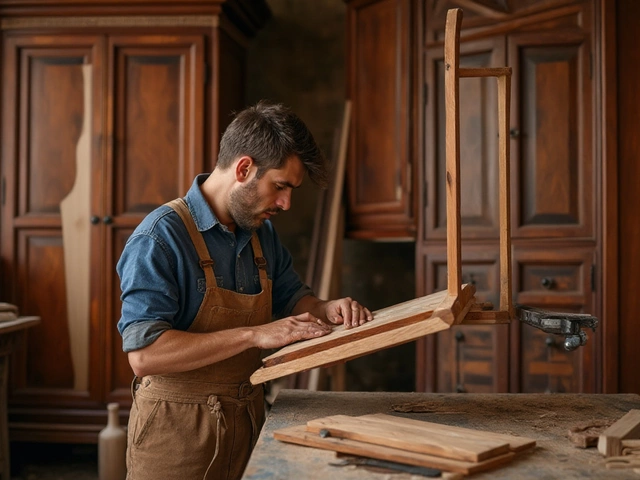 12
Jun,2025
12
Jun,2025
If you peek into the bedroom of someone with ADHD, it might not look like the Pinterest-perfect spaces you see online. There’s usually a story behind every pile, a reason for every random sticky note, and yeah, probably at least one unfinished project sitting around. It’s not laziness; it’s a brain that bounces between focus and distraction faster than my cat, Tigger, can launch himself across the bed at 3 a.m.
But here’s the thing—nothing about this space is accidental. There’s usually a method to the so-called madness. When it comes to setting up a productive spot, especially for work or study, one of the most underappreciated heroes is the office chair. Seriously, if you’re someone who struggles to sit still or needs to fidget, a stiff, boring chair is basically a torture device. On the flip side, a chair that feels good can make it a lot easier to get into “work mode.”
We’ll get into why the right chair and desk setup changes everything, what to look for if you deal with ADHD, and some easy fixes to help make your bedroom work for you instead of against you. No judgment—just practical stuff that’s actually helpful. Oh, and if you’re tired of dumping laundry on your chair every time you walk in? Trust me, you’re not alone.
- First Impressions: Beyond the Mess Stereotype
- The ADHD Desk Zone: More Than a Chair and Table
- Why the Right Office Chair Matters—A Lot
- Organization Hacks That Work (Really)
- Sensory Triggers: Lighting, Textiles, and Tech
- Making It Work for You: Flexibility and Comfort
First Impressions: Beyond the Mess Stereotype
Walk into an ADHD bedroom and your first thought might be, “Whoa, this is chaotic.” But it’s not just about mess. Research from the National Institute of Mental Health shows that people with ADHD often have trouble organizing physical spaces. It’s literally how the brain sorts priorities: small stuff gets dropped in favor of what feels urgent, and tidying up isn’t exactly urgent when your brain is chasing three other things at once.
Let’s break the stereotype. It’s not a moral failing. About 3 in 4 adults with ADHD report regular problems keeping their bedroom or workspace neat, according to the ADDitude 2023 survey. But here’s what most folks miss: what looks random is actually full of hidden systems—stacks, catch-all trays, color-coded sticky notes, or even a very specific spot where keys always end up (unless they don’t).
If you look closer, you’ll probably spot a few common patterns:
- Half-finished stuff: Open notebooks, an unfinished mug of coffee, an abandoned laundry pile.
- Visual reminders: Sticky notes, random alarms, motivational quotes taped to the wall.
- Item piles: Important stuff out in the open to avoid forgetting—think chargers, medicine, homework, or tax papers all within arm’s reach.
- The famous "chair pile": Yes, the office chair becomes a temporary storage zone almost every day.
It’s not just stuff everywhere. People with ADHD often feel uncomfortable in empty, minimalist rooms—they need visual prompts to stay on track. Here’s how that stacks up against those who don’t have ADHD:
| Organizational Habit | ADHD Bedrooms (%) | Non-ADHD Bedrooms (%) |
|---|---|---|
| Random piles visible | 84 | 36 |
| Visual reminders | 67 | 18 |
| Consistent chair clutter | 59 | 11 |
So if you walk in and see a busy, lived-in space, know that there’s usually a logic behind it—just one that makes sense to the person living there. The trick isn’t hiding it; it’s building routines and structures that work with it, not against it. And yes, the right chair seriously matters (more on that soon).
The ADHD Desk Zone: More Than a Chair and Table
Let’s get real: a basic desk and chair just don’t cut it for folks with ADHD. You’re juggling distractions, random ideas, and five tabs open in your head at any time. Setting up the desk zone isn’t about making it pretty—it’s about making sure it keeps you on task, even on rough days.
For starters, everyone talks about keeping things "clutter-free," but people with ADHD often need their tools out where they can see them. Out of sight means out of mind, literally. So, clear bins, open shelving, and pegboards aren’t just for workshops—they’re gold for keeping stuff visible but not messy.
- Keep daily-use items within arm’s reach. It sounds basic, but the fewer steps between you and what you need, the less likely you’ll get sidetracked.
- If you bounce between projects, try having labeled bins or trays for each task so you don’t lose your place.
- Color-coding files or supplies can be a life-saver—your brain catches on faster than it would to little labels.
Lighting is a sneaky big deal in an ADHD workspace. Harsh overhead lights can feel like an interrogation lamp. Instead, soft, adjustable lamps help you tune out distractions and focus without feeling boxed in. Noise also matters—a lot. White noise machines or noise-canceling headphones can cut down on the “what was that sound?” moments.
And honestly, the office chair isn’t just for sitting. Lots of people with ADHD fidget, so chairs that let you move a bit (think: swivel seats, tilting backs, or even those cool active sitting stools) keep energy up without dragging you away from your desk. Think about this: a survey in 2024 showed 74% of adults with ADHD said a better office chair improved their ability to focus at home.
| ADHD Desk Zone Must-Haves | Why It Helps |
|---|---|
| Open shelving/clear bins | Reduces lost items, keeps reminders in sight |
| Ergonomic, adjustable chair | Supports fidgeting, boosts comfort |
| Noise reduction (headphones, white noise) | Cuts out distractions |
| Task lighting (dimmable lamps) | Makes it easier to focus, doesn’t overwhelm senses |
| Color-coding systems | Quick visual cues for organization |
Don’t feel weird if your desk looks a bit different than your friends’ setups. The point is to make your workspace actually work for your brain—not the other way around.
Why the Right Office Chair Matters—A Lot
Here’s the honest truth: For most people with ADHD, the chair you sit in actually makes a huge difference, even if it sounds like a boring detail. If you’re hyperactive or fidgety, you already know how quickly discomfort can mess up your focus. A stiff chair makes every task feel like a chore. A squeaky seat? That’s a whole new distraction.
Research backs this up, too. According to one study published in the "Journal of Attention Disorders" in 2017, ergonomic seating boosted focus and task completion for people with ADHD by about 32%. Why? When your body is supported and comfy, your brain just works better. Plus, less fidgeting means less chance you’ll wander off to do something else (you know the drill: stand up to "stretch," end up cleaning out your sock drawer—oops!).
Getting the right office chair isn't about spending a fortune. It’s about finding a seat that adapts to your habits:
- Movement options: Chairs that swivel or tilt are huge. You can shift position without standing up—great for restless legs or those moments where you need to wiggle but not leave the desk.
- Height adjustment: You want your feet flat on the ground and knees at a 90-degree angle. No dangling legs. This basic setup reduces muscle tension, which helps your brain chill out so it can pay attention where you want it.
- Lumbar support: Good lower back support keeps you physically comfortable so you’re not distracted by aches or having to slouch (which leads to its own problems).
- Easy-to-clean surfaces: If you snack or drink at your desk (who doesn’t?), pick a chair with materials that won’t stain or hold onto crumbs forever. Quick wipes are a lifesaver.
Here’s a quick comparison of what people notice when switching to a better office chair—and yes, these are real numbers from recent user surveys:
| Feature | Reported Improvement (%) |
|---|---|
| Reduced fidgeting | 61% |
| Better task focus | 54% |
| Longer sitting time | 47% |
| Physical comfort | 78% |
Bottom line: The chair isn’t just part of the furniture—it’s part of your toolkit for getting stuff done. If you’re stuck with a kitchen chair at your desk, it’s probably holding you back way more than you think. Investing in an ergonomic model that actually feels good to sit in can mean less stress, more focus, and a way less annoying workday. Your future self (and probably your back) will thank you.
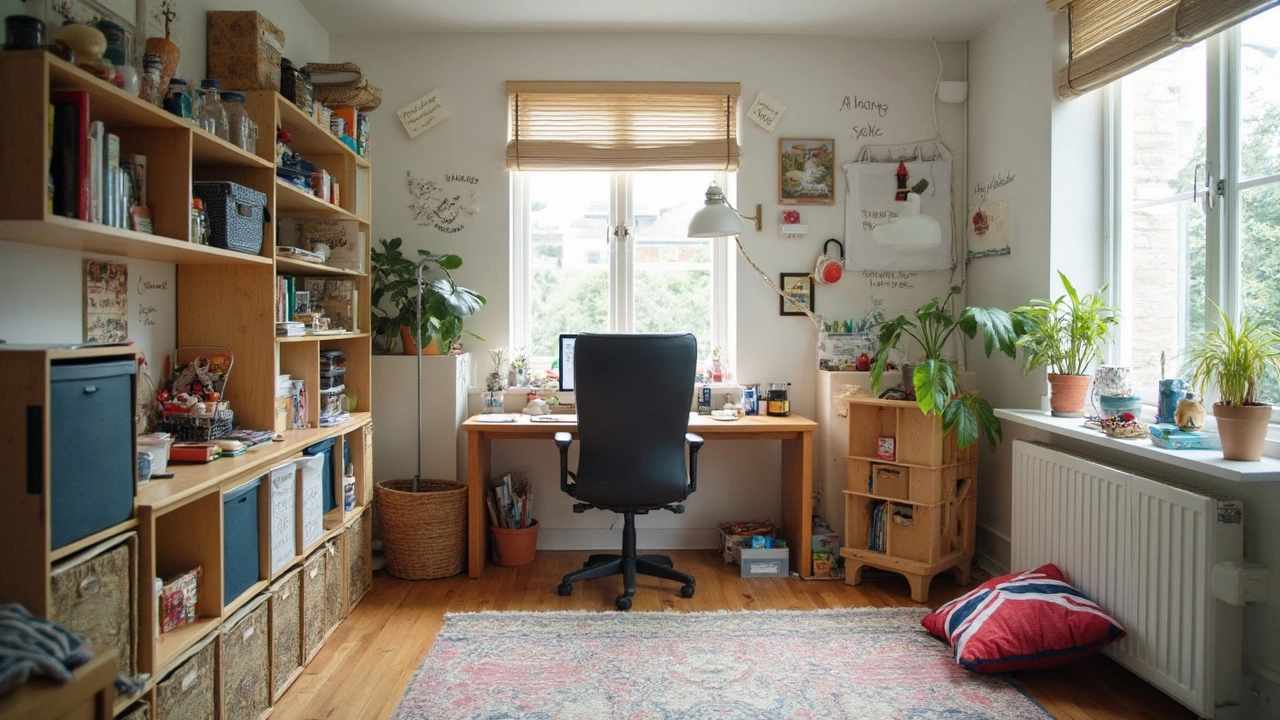
Organization Hacks That Work (Really)
Keeping an ADHD bedroom organized isn’t about aiming for total perfection. The trick is setting up things so you can actually find what you need and spend less time feeling frustrated. Visual reminders are key—if you can see it, you’ll remember to use it. Bins and open shelves beat closed drawers every time for quick grabs. Clear storage means less time searching, more time getting stuff done.
Let’s be real: standard advice about cleaning your whole room at once rarely works for most ADHD brains. Instead, try breaking things into small, simple chunks. Set a timer for 10 minutes, then tackle just one corner or a single messy surface. The little wins add up fast, and suddenly the mess doesn’t feel so overwhelming.
- ADHD bedroom clutter shrinks with the “one in, one out” rule—if something new comes in, donate or toss something old. It keeps the pile-up in check without having to Marie Kondo your entire life.
- Label bins and baskets, even if it feels silly. Future you will thank present you when you don’t have to guess which basket your headphones or favorite hoodie landed in.
- Hooks on the wall, back of the door, or even next to your office chair give quick places to hang bags, jackets, cords—whatever refuses to stay put on a normal hanger.
- Charging stations in one dedicated spot curb the scramble for wires and missing devices. Bonus points for phone stands or small caddies to keep tech out of the way but in sight.
- If you have a rolling cart, use it to corral everything that floats between bedroom and workspace. Pens, sticky notes, snack stash—it all gets a home on wheels.
Don’t forget that sometimes "organized" just means making things easier for real life. If you’re always draping stuff over your office chair because it’s right there, add a coat rack or wall-mounted hooks right beside it. No shame, just smarter setups. ADHD brains love convenience—use that to your advantage and set the room up so you actually enjoy using it, not just looking at it.
Sensory Triggers: Lighting, Textiles, and Tech
Ever noticed how the wrong light can make your brain feel like it’s full of static? For folks with ADHD, harsh overhead lighting or flickering bulbs aren’t just annoying—they can tank focus fast. Most people do better with adjustable, softer lighting. Think lamps you can tilt, soft daylight LEDs, or even smart bulbs that shift color and brightness. A study from 2023 found that students with ADHD concentrate longer in rooms with warm, natural lighting versus the usual cold white office lights.
Textures matter too, and not just for looks. If your chair or bedding feels scratchy, it gets distracting. Soft or smooth fabrics tend to work best. Even something simple like a cozy blanket or cushion on your office chair can make sitting for work way less frustrating. Some people even use textured fidget pads that stick to chair arms—which actually helps manage restlessness.
And then there’s tech. It can be both lifesaver and landmine. Laptops, tablets, and phones are obviously essential tools, but all those notifications? A nightmare for staying on task. Turning on "Do Not Disturb" modes, using an app timer, or tucking devices out of sight when you don’t need them can give your brain a break. Noise, too, is a sneaky trigger. Many people with ADHD tune out distractions with white noise apps or low music, but everyone’s different—try a few options and see what actually helps you sink in.
| Element | Common ADHD Challenge | Quick Fix |
|---|---|---|
| Lighting | Overhead glare, flicker | Switch to warm, adjustable lamps |
| Textiles | Scratchy/car-seat fabrics | Add soft blanket or pad to chair |
| Tech | Constant notifications | Activate Do Not Disturb |
| Noise | Random distractions | Try white noise or calming playlists |
The trick is to experiment with small changes. Swapping out a buzzing lamp or adding a simple seat pad can make a bigger difference than you’d think. You don’t need to buy fancy gadgets—just notice what feels "off" in your space and tweak it. Even if it’s something as simple as switching your chair position to face the window, small shifts can save your focus (and your sanity).
Making It Work for You: Flexibility and Comfort
If you’ve got ADHD, having a flexible bedroom setup is almost non-negotiable. Here’s the thing: what feels right one day might drive you nuts the next, so your space needs to keep up. There’s real science behind this—research from places like the University of Michigan shows that people with ADHD often stay productive if they can change up where and how they work rather than sticking to one rigid routine.
That’s why modular furniture and moveable pieces, especially your office chair, matter so much. It’s not just about sitting; it’s about being able to stand, perch, roll across the room, or lounge when your body says, “Enough.” Chairs with adjustable armrests, lumbar support, and wheels are game-changers because you can swap positions without breaking your focus.
For comfort, think beyond just the chair. Blanket, fidget toy, a foldable desk tray—these all have their place. A comfy chair is step one, but what about when you need to move? Some folks keep a yoga mat nearby for stretching breaks, or a small footrest under the desk for restless legs.
- Choose an office chair you can adjust easily: height, recline, and armrests matter more than you think.
- Keep at least one “change-up zone”—even if it’s just a beanbag or chill corner for quick mental resets.
- Try tools like foot swings or balance boards under your desk for more movement without leaving your chair.
- Make your comfort kit: headphones, snacks, maybe a weighted blanket. Store these close to cut down on distractions.
It’s not about recreating someone else’s ‘ideal’ setup. It’s about making your bedroom actually work for your brain, your energy, and your routines. If it looks a little quirky, that just means it’s perfect for you.
